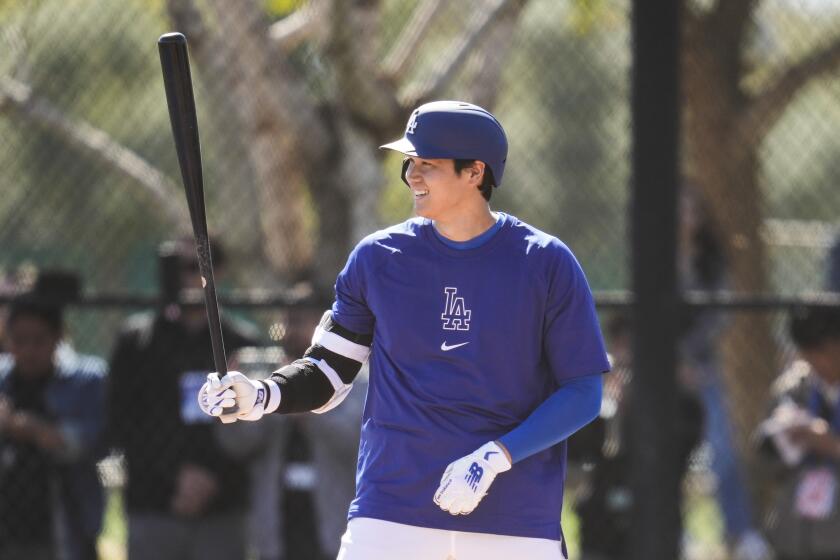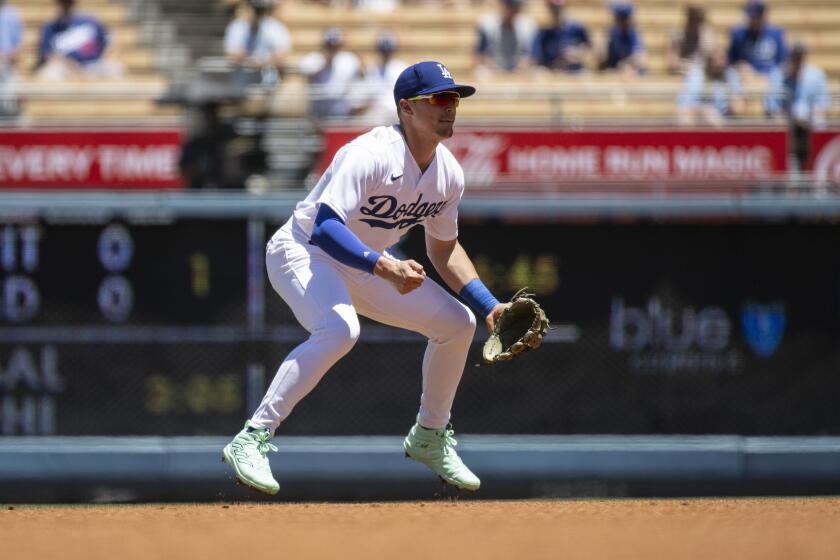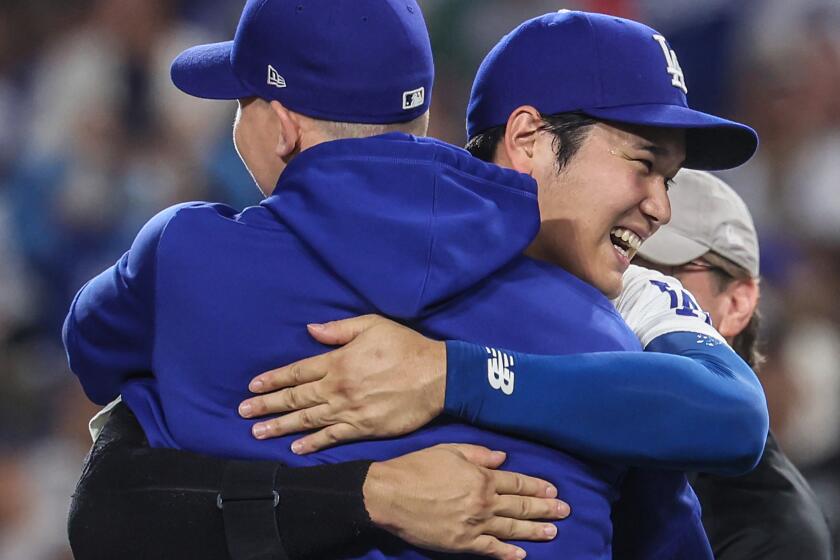Why the Dodgers are making Shohei Ohtani their new No. 2 hitter, in front of Freddie Freeman
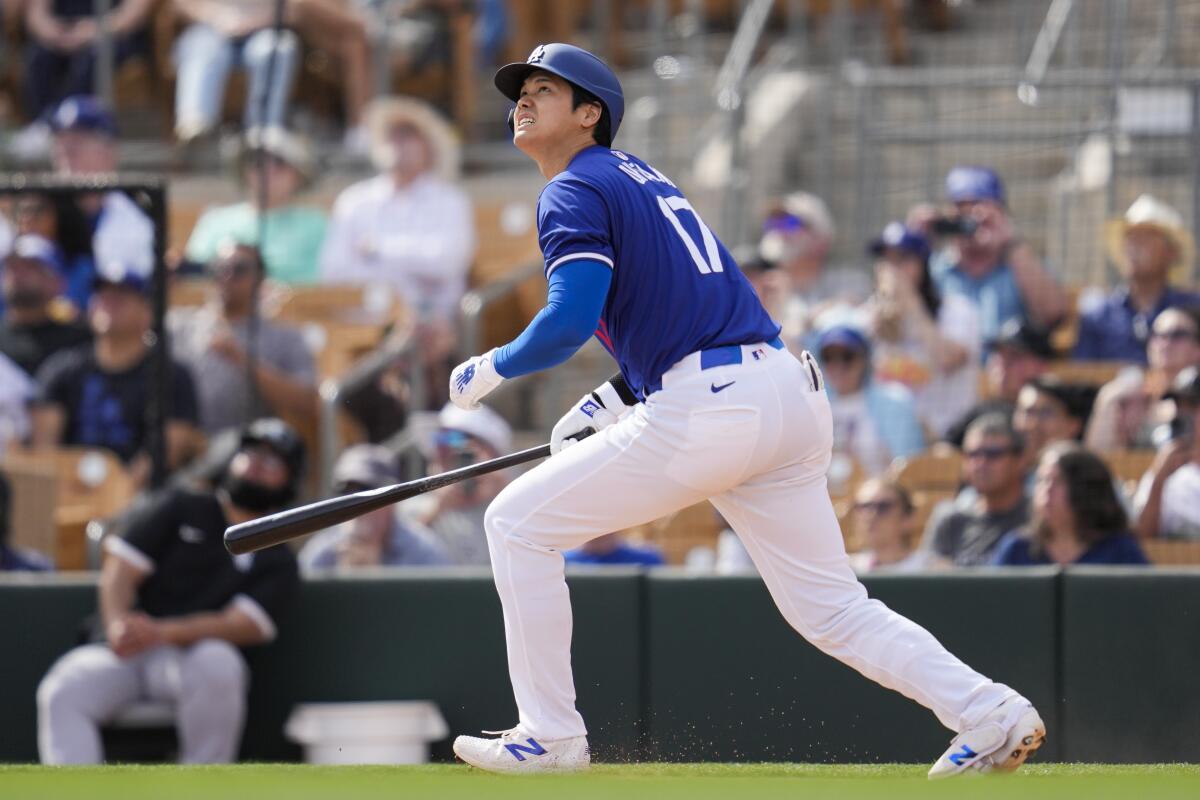
PHOENIX — Going by conventional baseball wisdom, there was one version of the Dodgers’ new-look batting order that seemed to make the most basic sense.
Mookie Betts at the top as a power-hitting leadoff threat. Freddie Freeman behind him as an on-base, contact-hitting specialist in the No. 2 spot. And then Shohei Ohtani rounding out the superstar trio as the Dodgers’ new No. 3 hitter, where he would be potentially positioned to drive in runs, clear the bases and help put consistently crooked numbers on the board.
When the Dodgers announced their first spring training lineup with all three MVP winners Tuesday, however, the order of the names was slightly different.
The Dodgers’ two-way star won’t pitch in 2024 after Tommy John surgery, meaning he can fully concentrate on his hitting.
Betts was still the leadoff hitter, reprising the role he has held for most of his 10-year major league career.
But Ohtani and Freeman had instead been swapped, with Ohtani batting second and Freeman slotted directly behind him.
“I think we’re gonna do this for a while,” manager Dave Roberts said.
Thus, come opening day, expect Betts, Ohtani and Freeman in that order to emerge as the Dodgers’ preference for their lineup’s new Big Three.
“No matter where I’m hitting in the lineup, I’m not really going to change my approach,” said Ohtani, who marked his Dodgers spring debut Tuesday with a fifth-inning home run at Camelback Ranch. “I’m going to try to swing at strikes.”
According to Roberts, the team came to the decision after conversing with each of the three players — none of them had a strong preference, Roberts said — and contemplating the pros and cons of each lineup permutation.
Keeping Betts as the leadoff hitter was easy, Roberts noted, describing the seven-time All-Star — whose 48 career leadoff home runs are tied for fifth most in MLB history — as the “igniter” of the offense.
“Mookie really has thrived in the leadoff spot,” Roberts said. “I like him at the top.”
Putting Ohtani in front of Freeman, meanwhile, was a matter of game-planning strategy.
Ohtani is more of a power threat than Freeman, dwarfing his new teammate’s home run total (124 to 81) over the last three seasons. Traditionally, that would make him a better fit as a three-hole hitter.
Ohtani’s pop, however, also comes with more risk of striking out. While Freeman has struck out in only 15.5% of plate appearances the last three years, Ohtani has gone down on strikes 25.9% of the time — a byproduct of him being more of a “free swinger” than Freeman, as Roberts described Tuesday.
By putting Freeman behind Ohtani, the Dodgers are hoping to benefit from the theory of “lineup protection.”
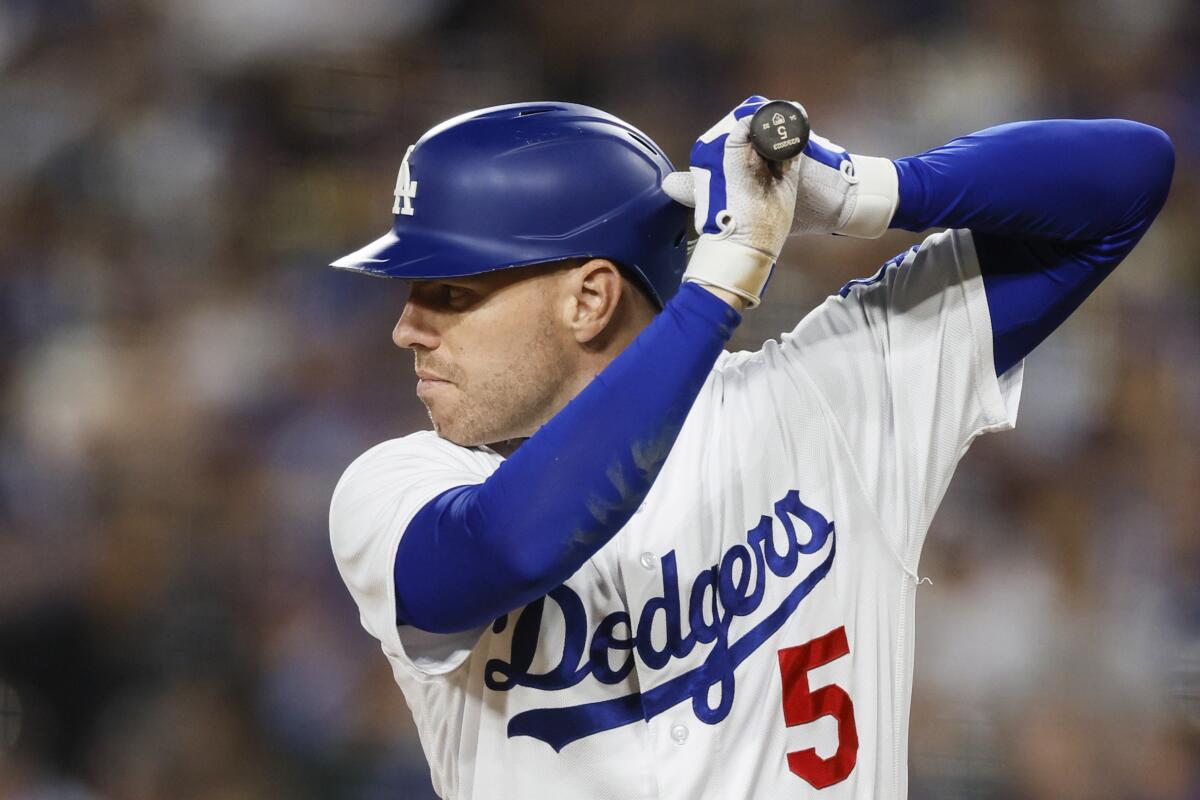
The thinking goes, pitchers will be more wary of walking Ohtani if they know Freeman — one of the best situational hitters in baseball — is on deck.
If so, Ohtani could see more pitches in the zone to hit, and fewer off the plate that could tempt him to chase.
“Pitchers are still gonna attack Shohei in a specific way, no doubt about it,” Roberts said. “But there’s also a chance that they should be in the strike zone a little bit more than if Freddie wasn’t behind him.”
Ideally, that could mean a higher on-base percentage for Ohtani (who still led the American League in that category last year with a .412 mark) and more run-producing opportunities for Freeman (whose .370 average with runners in scoring position last year was second best in the NL behind Betts).
“Today was the first game so it was hard to tell, but I definitely think it’s going to help out,” Ohtani said of the lineup arraignment. “It’s not just Freddie. It’s Mookie in front of me. And a bunch of great hitters past Freddie. So I’m excited to find out what it’s going to feel like.”
There is other logic for batting Ohtani second.
He has significantly better numbers as a No. 2 hitter in his career, with a .278 average and a 1.013 on-base-plus-slugging percentage while batting second compared to a .271 average and .856 OPS while batting third.
Ohtani is also a bigger threat on the bases than Freeman — creating opportunities for Ohtani to potentially score from first on Freeman extra-base hits, or get into scoring position in front of him with a stolen base.
“Not to take away anything from anybody else on our roster,” Roberts said, “but Freddie is the biggest presence for protection behind Shohei.”
That doesn’t mean there are counter-arguments to be made.
The “lineup protection” theory doesn’t always work out as intended. As MLB.com’s Mike Petriello noted recently, Ohtani actually saw fewer pitches in the zone when batting in front of three-time MVP Mike Trout with the Angels over the last two years.
There is also the more traditional line of baseball thinking that suggests a slugger like Ohtani should always hit behind more of a contact threat like Freeman, so that more of Ohtani’s home runs could potentially come when runners are on base.
Dodgers utilityman Kiké Hernández signs a one-year, $4 million deal with the Dodgers. Margot was acquired in the offseason as part of the Tyler Glasnow deal.
Alas, Roberts and the Dodgers are sticking to their plan for now, eager to see how a Betts-Ohtani-Freeman alignment plays out early in the regular season.
“It’s not set in stone, and it’s still gotta work and make sense,” Roberts said. “But I do think I can be slow moving on things. I don’t [make a] move just because for a week or two it doesn’t work.”
On Tuesday, Roberts was just happy to see the trio together on the field for the first time — fulfilling a vision he’d been dreaming about since Ohtani signed his 10-year, $700-million contract in December.
“As soon as we signed Shohei, as a manager, you start trying to formulate a lineup and see how it looks on paper,” Roberts said. “You get a big glow on your face when you look at Ohtani, Freeman and Betts.”
More to Read
Are you a true-blue fan?
Get our Dodgers Dugout newsletter for insights, news and much more.
You may occasionally receive promotional content from the Los Angeles Times.

